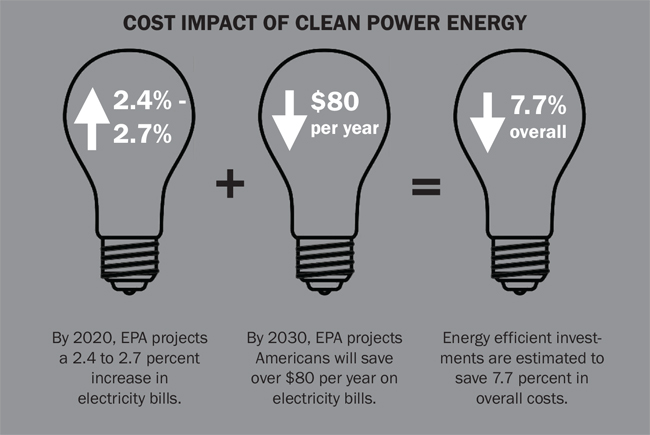At all levels of government — federal and local alike — the Clean Power Plan has faced serious backlash because of cost concerns. Politicians fear spending money on environmental policy, while citizens are wary of spikes in their electricity bills — both points that critics have been quick to tout. The emphasis on minimal upfront costs undervalue the plan’s climate benefits, estimated to be worth billions, and divert attention from its true impacts on electric bills, which are expected lowered in the years following its implementation.
Opponents of the Clean Power Plan have claimed that it will disproportionately harm low-income communities who are particularly vulnerable to higher energy costs. Much of these claims come from a study conducted by Management Information Services, a consulting firm whose clients include American Electric Power, the Southern Company, and Private Fuel Storage.
In other words, MIS caters to violators of the Clean Air Act, as well as the largest greenhouse gas emitter in the U.S. utility industry. Aside from the investment of certain companies, the study has various biases and its conclusions have been debunked and proved baseless amid more accurate claims of an increase in jobs, the costly impacts of power plant pollution and projected health benefits. The Environmental Protection Agency’s own cost-benefit analysis paints a truer picture on the costs to come from the plan’s implementation.
By the year 2030, the EPA projects that Americans will save $7 per month and more than $80 per year on electricity. While the EPA concedes that electric bills may rise minimally by 2.4 to 2.7 percent in 2020, energy efficiency investments are projected to payoff in the following years, leading to a 7.7 percent decline in overall costs. Even with long-term savings, environmental regulations such as the one at hand come with incentives that should put citizens’ minds at ease.
“Regulation like this has always had ways to assist low-income communities in terms of giving them extra time to pay electric bills, or not shutting off their heaters in the winter if they can’t pay,” said Carey King, assistant director of the Energy Institute at UT.
Assistance under the Clean Power Plan comes in the form of the Clean Energy Incentive Program. In this way, states will be awarded extra compliance credit for energy efficiency programs that provide savings to low-income communities. Another aim of this incentive program is to provide jobs for people in these communities.
While Senate Republicans obstruct the passing of this legislation, with their latest vote to block on Tuesday, the argument of high costs and false compassion for low-income communities has become a tired argument, and one without merit. Those susceptible to the consequences of high energy costs, in reality, only look to benefit under the Clean Power Plan.
Arevalo is a journalism freshman from McAllen. Follow her on Twitter @alexparevalo.





















